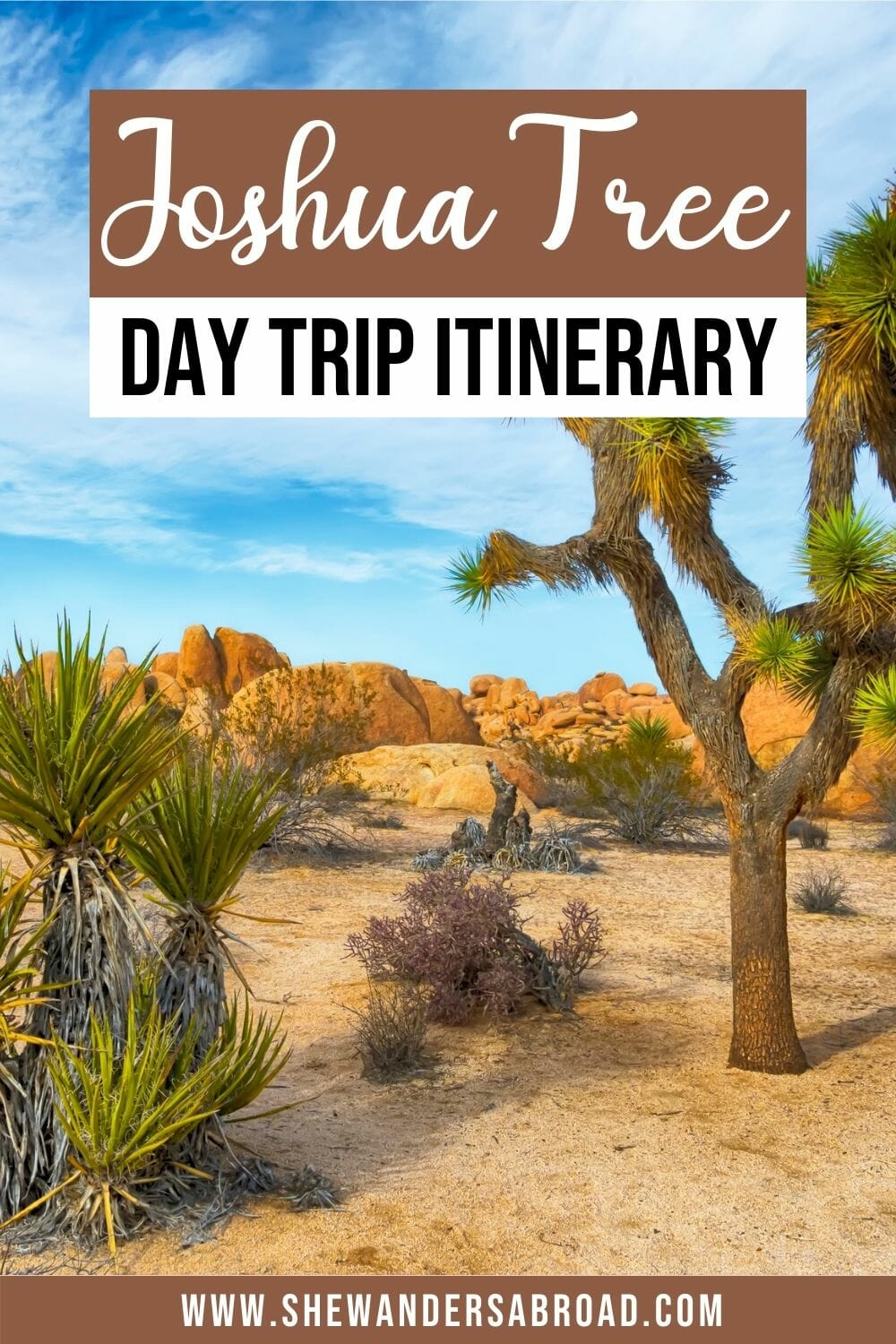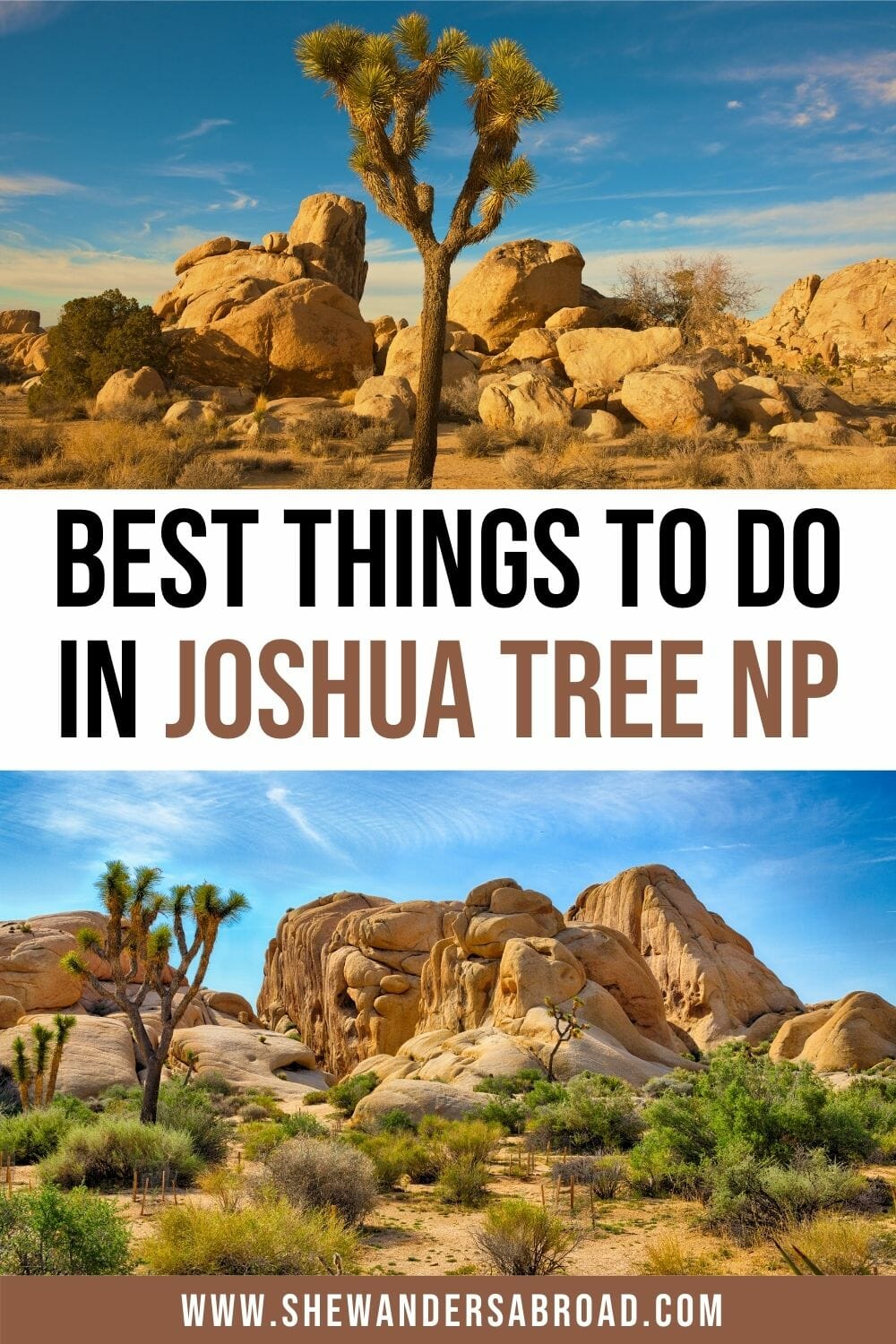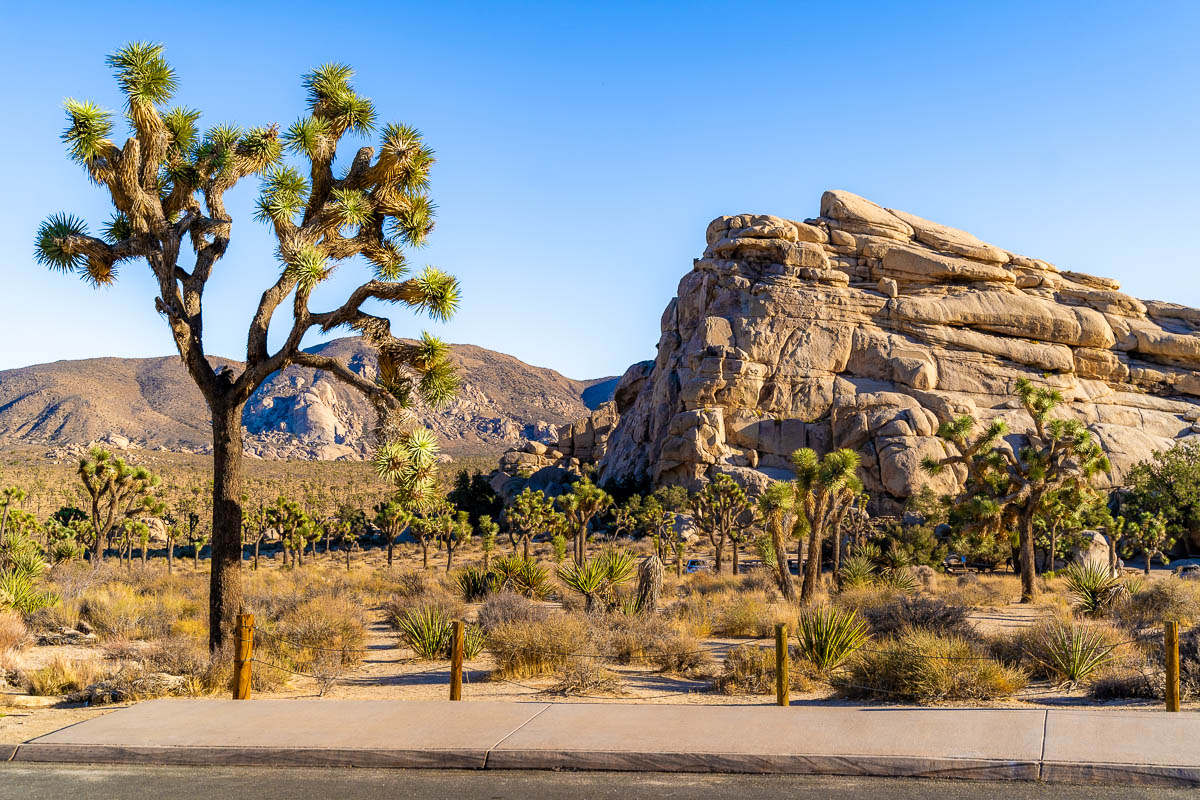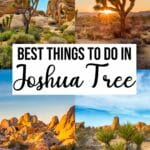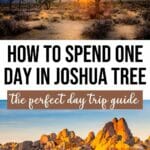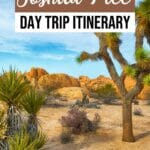Looking to plan the ultimate Joshua Tree day trip? Then you’re in the right place!
California’s Joshua Tree National Park is one of the most unique national parks on the West Coast. The park marks the spot where two ecosystems – the Mojave Desert and the Colorado Desert – merge. The reserve is distinguished by surreal geologic landmarks, epic desert vistas, and lashings of those bizarre trees of course!
Although the wider national park covers 800,000 acres (323,749 hectares), it’s perfectly possible to see the best of Joshua Tree in a day. The highlights are relatively compact and this guide will show you how to maximize your time.
Read on for the ultimate one day Joshua Tree itinerary including all the essential information you need to prepare for your trip.
*Disclosure: This post contains a few affiliate links, which means I may receive a small commission, at no cost to you, if you make a purchase through my link.*
Table of Contents
Best Things to Do on a Joshua Tree Day Trip
Provided that you start bright and early, the following hiking trails and points of interest may be visited over the course of one day in Joshua Tree.
Visit Cholla Cactus Garden
The Cholla Cactus Garden is a patch of parkland just off Pinto Basin Road which is brimming with fuzzy-looking cacti.
Cholla cacti are nicknamed “teddy bear” cacti due to their appearance. The plants feature densely interlaced yellow spines and tightly clustered stems.
They are rare to see in the park so visiting the garden is your best bet to get a close look at them. Be careful not to touch the cacti as they prove challenging to remove and can give you a nasty pinch.
Besides the cholla cacti, you will also spot creosote bush (Larrea tridentata) and burrobush (Ambrosia dumosa).
Subject to the time you visit during late winter and the spring months, you will also see the likes of yellow brittlebush, desert lavender, beavertail cactus, and desert starvine.
The designated nature trail is an easy, flat 0.2 mile (0.3 km) that only takes around 20 minutes to complete once you’ve parked at the lot on Pinto Basin Road.
Even if you visit during the sweltering summer, you can still include this brief walk on your Joshua Tree one day itinerary.
As the Cholla Cactus Garden is the furthest east on this guide, you might want to drive all the way out to it and then gradually work your way westwards.
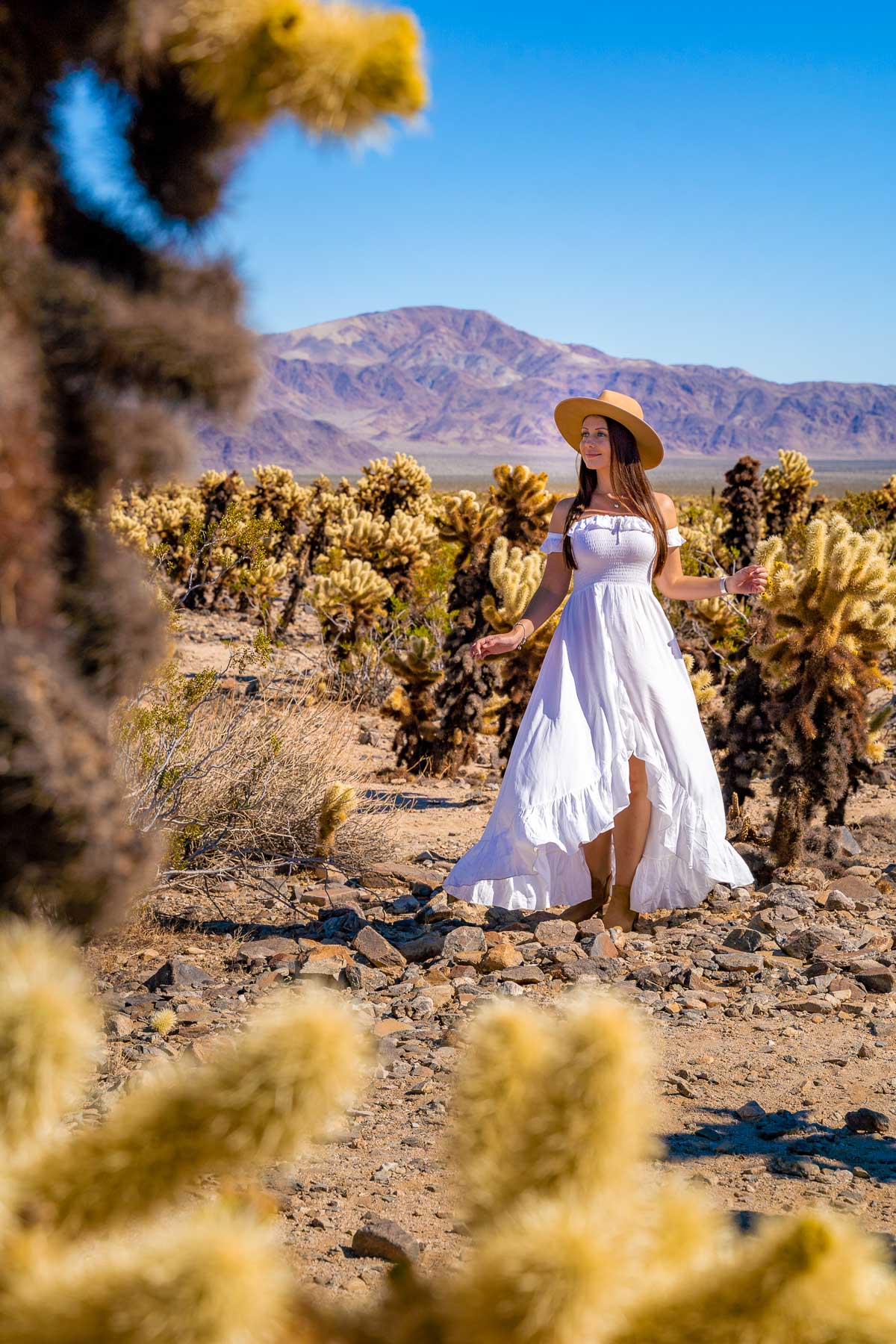
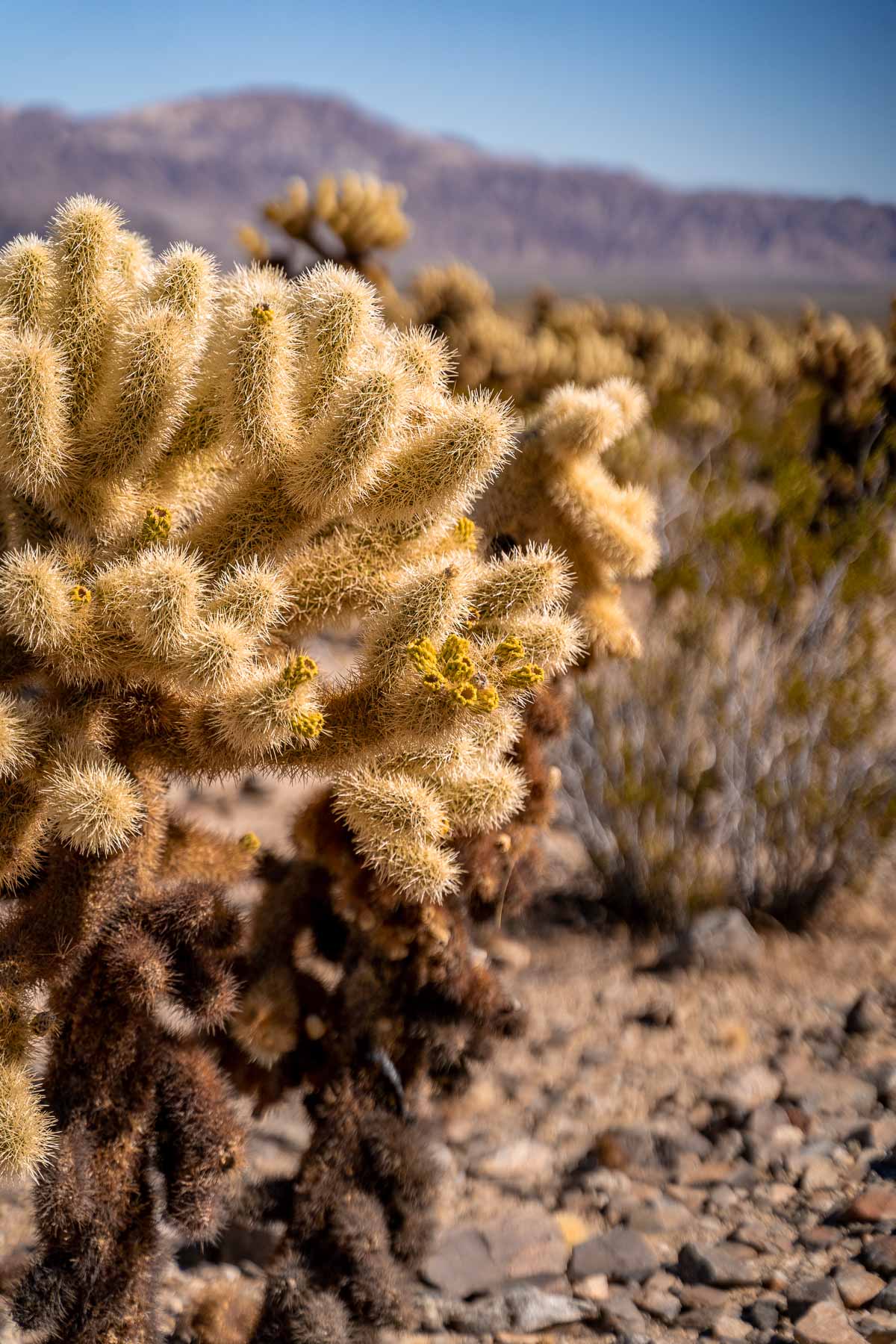
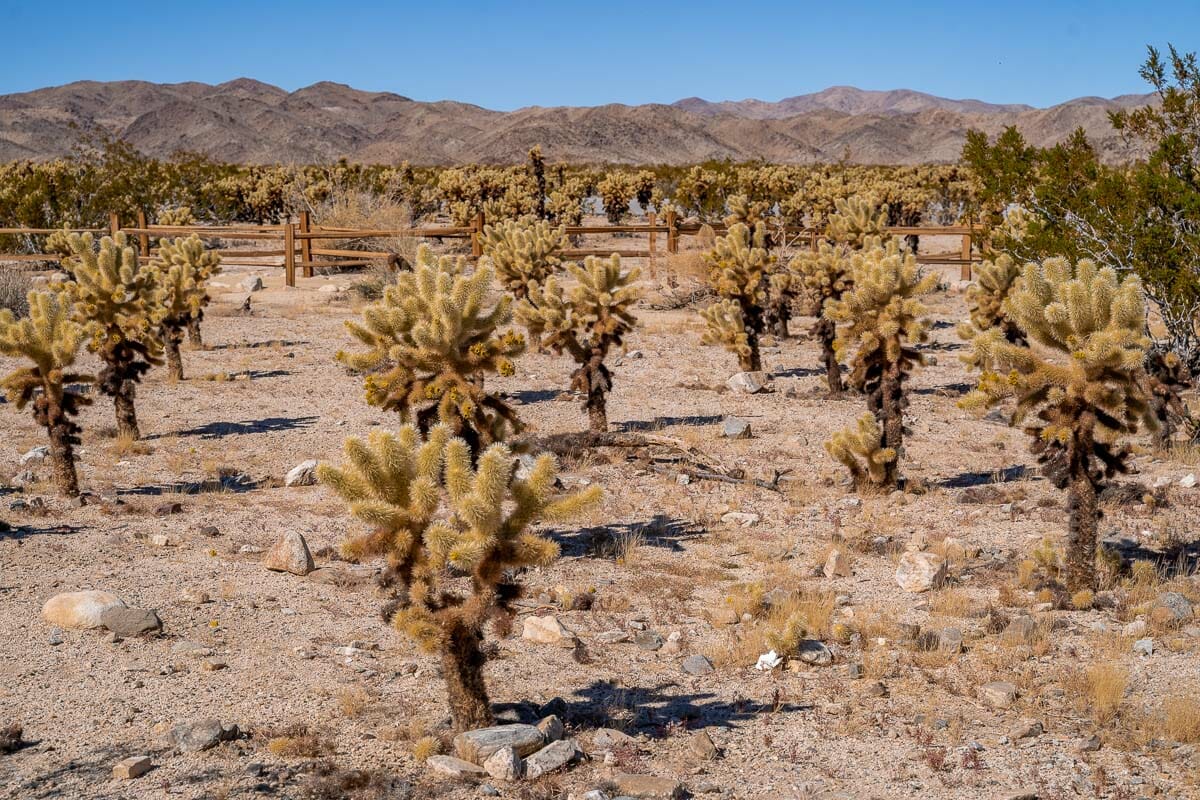
Explore Arch Rock
Arch Rock is a massive white granite boulder that resembles the trunk of an elephant. The formation evolved due to geological processes and erosion.
It registers a length of around 30 feet (9.1 meters) and is located atop a small hill which adds to its impressive status.
As well as the Arch Rock and surrounding formations, you can check out the heart-shaped rock. Together these boulders provide awesome photography opportunities during your Joshua Tree day trip.
This rock is a short walk northwards from Arch Rock. It isn’t clearly marked so check out where the other hikers are headed and consult them for tips if you are unsure.
Access to Arch Rock is via the Arch Rock Trail which is 1.4 miles (2.1 km) in length and takes around one hour to complete.
Park your car at the Arch Rock Nature Trail trailhead – the Twin Tanks parking lot – and then follow the signs. It’s impossible to get lost.
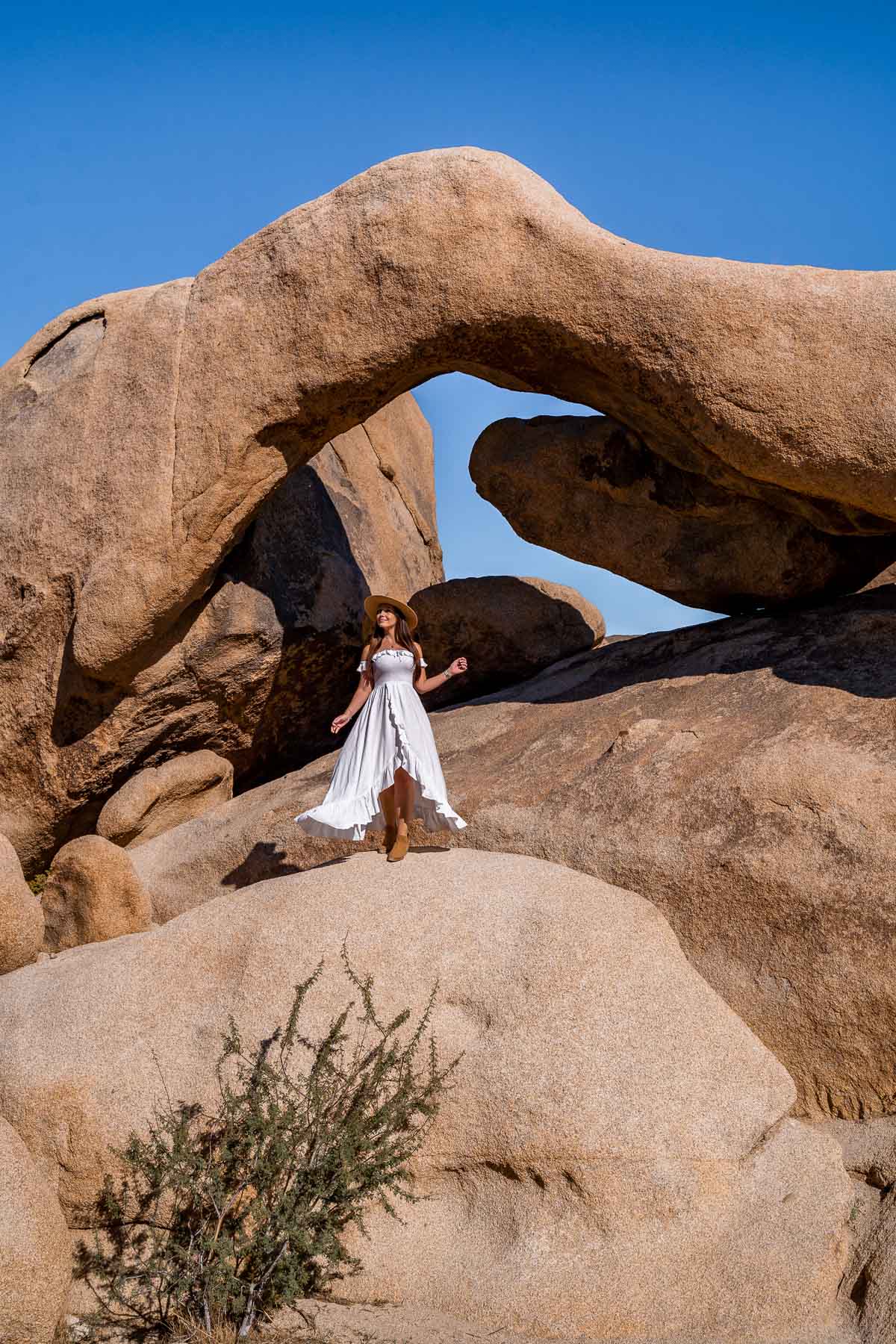
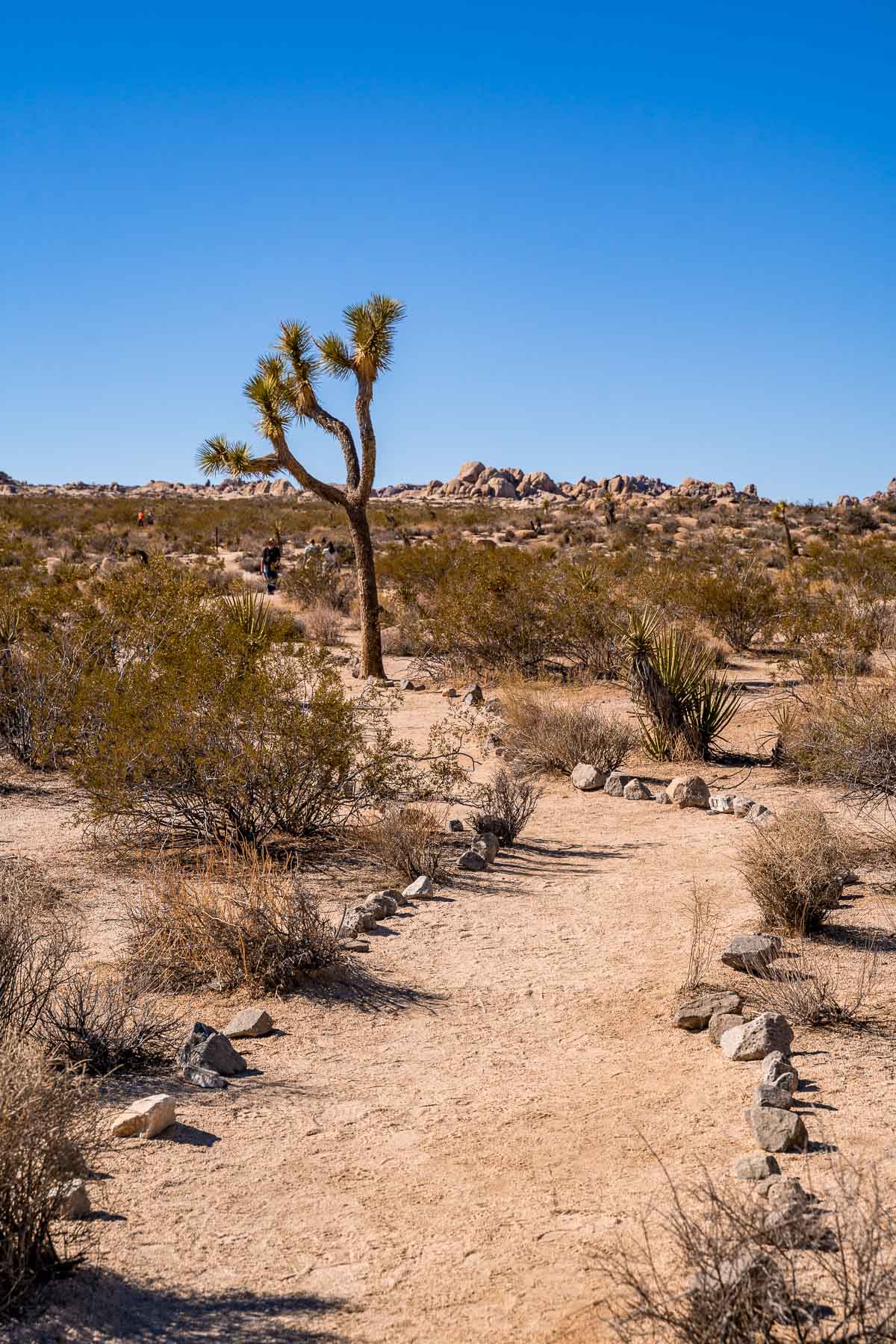
Find and photograph Skull Rock
Skull Rock is a desert granite rock formation that, with two depressions like eye sockets caused by erosion, resembles a human skull. It peeks out from a pile of large boulders and is a lot of fun to photograph!
You can pull over at the side of the road – subject to parking availability – and visit the rock quickly for photos.
Otherwise, you may follow a 1.7-mile (2.7 km) trail that weaves you through all the yucca plants and desert landscape to Skull Rock and surrounding boulders. Parking and the trailhead are located just east of the Jumbo Rocks Campground.
Bear in mind that as with Arch Rock, Skull Rock gets very crowded during the busier seasons. You will want to plan your schedule carefully to get there early.

Hike to the top of Ryan Mountain
Ryan Mountain is one of the more challenging hikes on this one day Joshua Tree itinerary. The trail takes you to the summit of the mountain that sits right in the center of the national park.
While the track isn’t too strenuous for people with a decent level of fitness, the weather conditions are what make it more difficult in comparison to other hikes on this guide.
As you carve your way up the well-marked route, the landscape opens up and provides an incredible perspective of the park. Once you reach the top, you can appreciate 360-degree views of Joshua Tree from a height of 5,457 feet (1,663 meters).
The parking area for the Ryan Mountain Trailhead is located between Sheep Pass and Ryan Campground on Park Boulevard. The 3-mile (4.8 km) hike sees an elevation of 1,050 feet (320 meters) and takes approximately 1.5-2.5 hours to complete.
Along the way, you will encounter staircases and tracks composed of sand and rock. You’ll need decent footwear but poles and other equipment is not necessary unless you prefer to take them.
As the trail is exposed to the elements, it is extremely dangerous to attempt it during the summer months or the hotter parts of the day. It’s important to take enough water with you as you don’t have an option to refill your bottles along the hike.
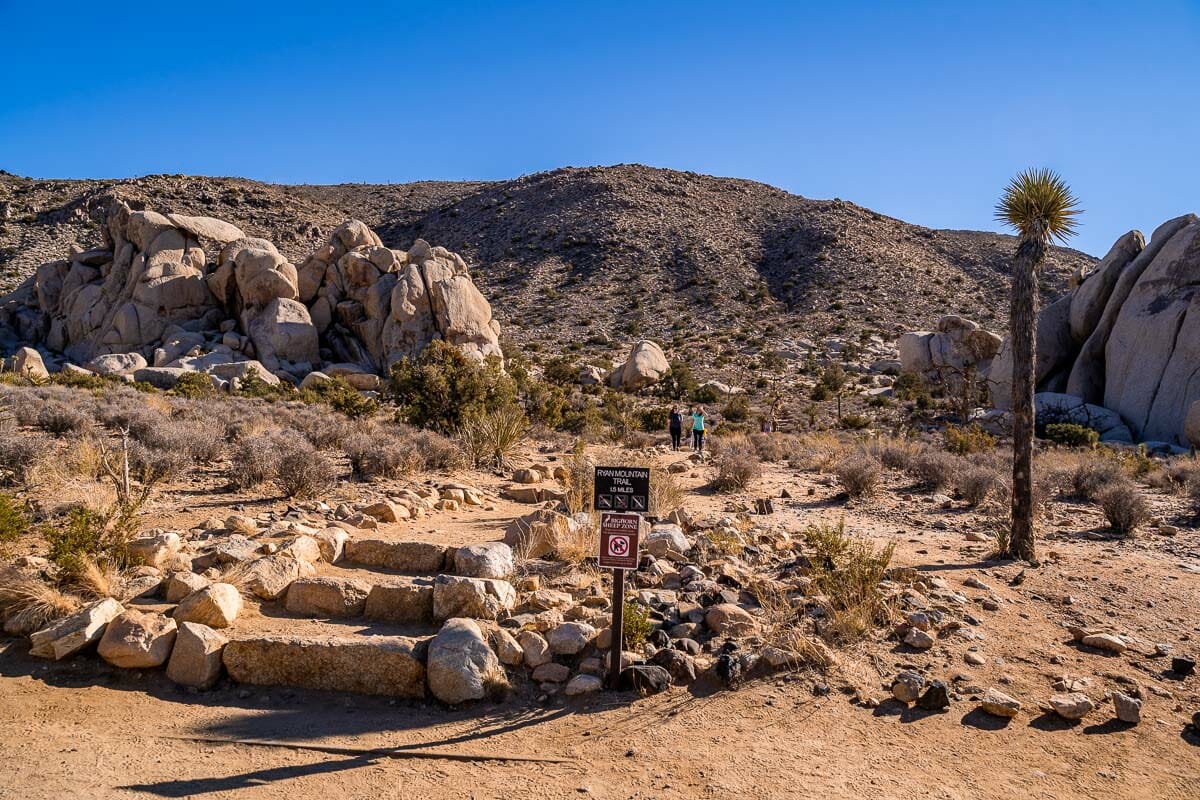
Hike the Hidden Valley Nature Trail
If the Ryan Mountain Trailhead doesn’t suit your arrangements for a Joshua Tree one day trip then you can opt to take this gentler alternative. The Hidden Valley Nature Trail takes you through a huge basis that features boulders and formations of all different shapes and sizes – as well as the fuzzy trees.
The origin of the valley is connected to the formation of Monzogranite rock as a result of cooling magma.
As you wander the trail you will note how the scenery is strewn with hundreds of rocks and boulders where you can clamber up for viewpoints and photo opportunities. It’s a real playground if you enjoy scrambling and experimenting with photography angles.
This 1-mile (1.6 km) loop takes no more than 45 minutes to an hour to complete. You can park at the Hidden Valley Nature Trail parking lot of Park Boulevard and then start the route.
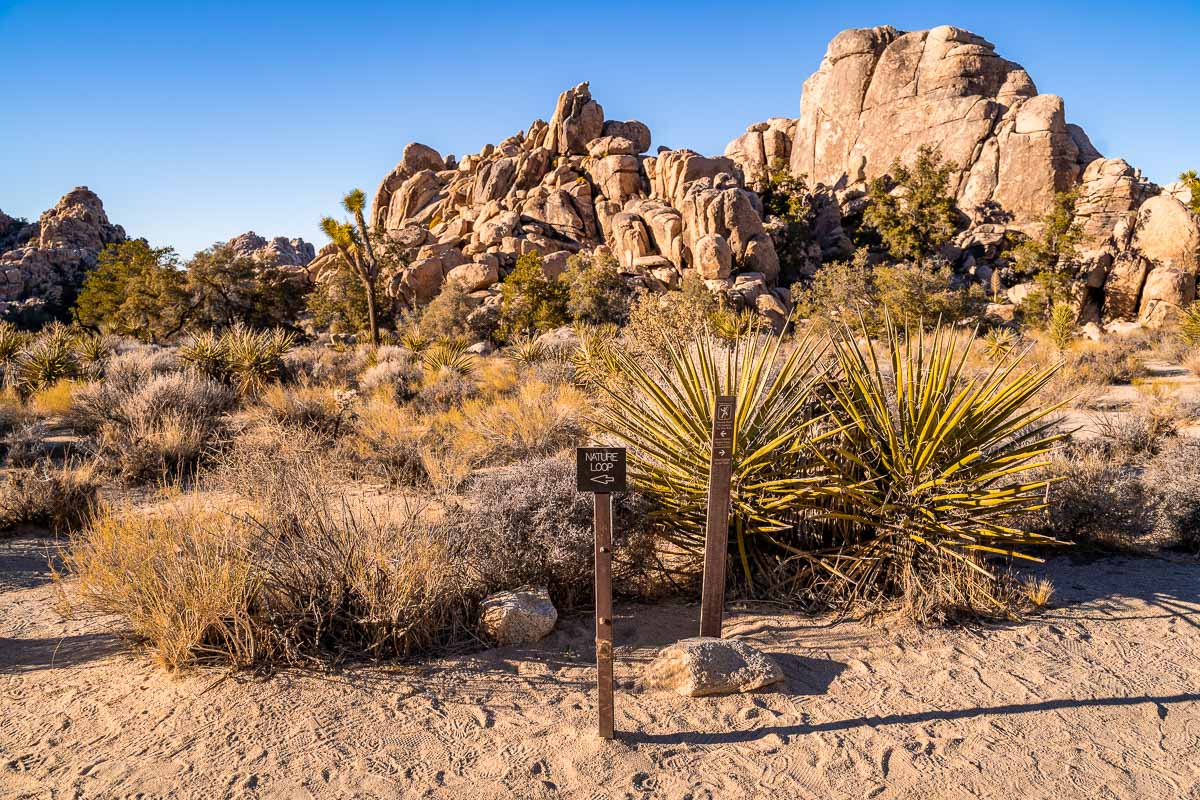
See the sunset at Keys View
You can conclude your perfect Joshua Tree day trip by catching golden hour at one of the innumerable sunset spots in the park.
Keys View is the highest lookout in the national park and offers panoramic views across the desert, ranges, and Coachella Valley. You can see San Andreas Fault, Mount San Jacinto, Mount San Gorgonio, and the Salton Sea on a clear day.
Keys View is located on Keys View Road off Park Boulevard. There is a parking lot from where you can follow a short but steep track up to the viewpoint.
As Keys View is extremely popular, you will need to arrive well ahead of sunset. Aim for at least 30 minutes during the quieter months and 45 minutes to one hour during the peak season. If you’re coming from Hidden Valley, it’s a 15-minute scenic drive past lots of Joshua Trees.
Once you’ve got your parking spot you can enjoy exploring the viewpoint and securing a spot to watch the show!

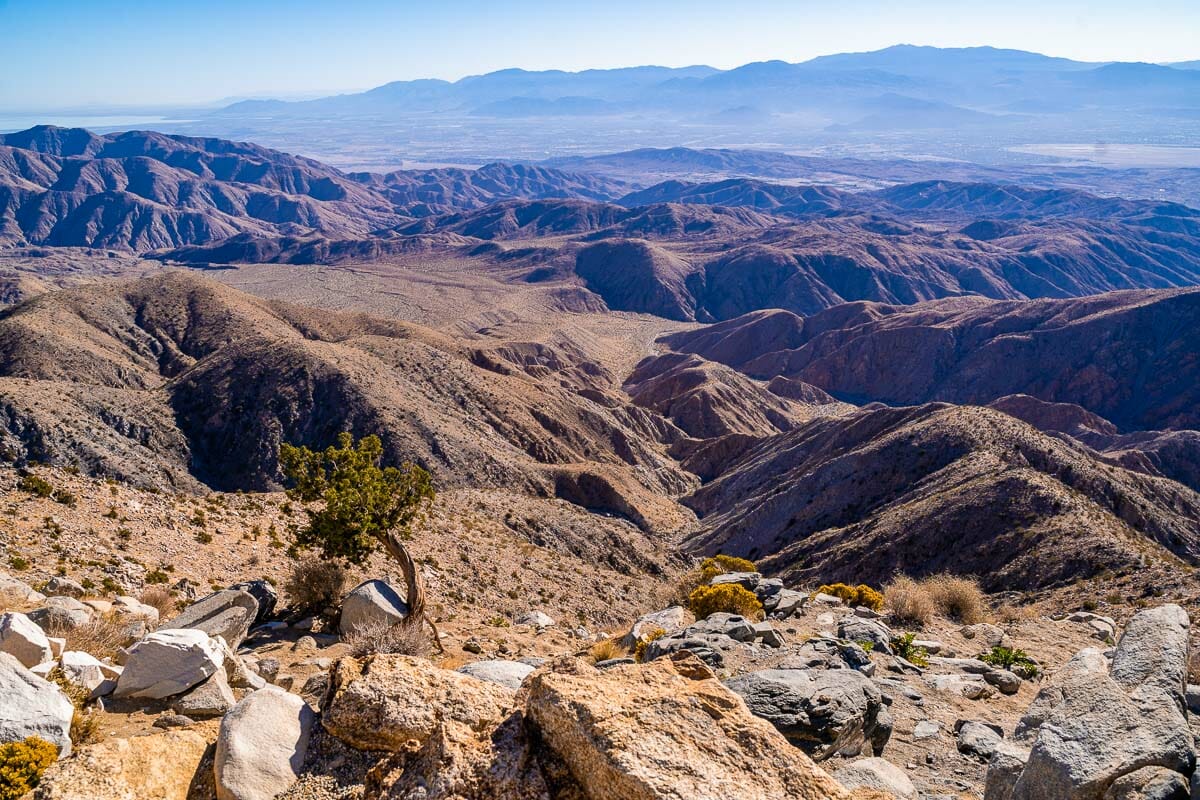
Useful Info for Spending One Day in Joshua Tree
Where is Joshua Tree National Park located?
The Joshua Tree National Park is located in the state of California within the Mojave National Preserve. It sits at an elevation of approximately 2,700 feet (820 meters) above sea level.
The main Joshua Tree Visitor’s Center is located right off Hwy 62 at 6554 Park Blvd., Joshua Tree, CA 92252. Secondary centers are dotted around the park.
It is advisable to swing by one of the visitor centers at the start of your day trip to Joshua Tree to pick up maps, seek advice regarding the current conditions, and read the literature about the geology and history of the national park.
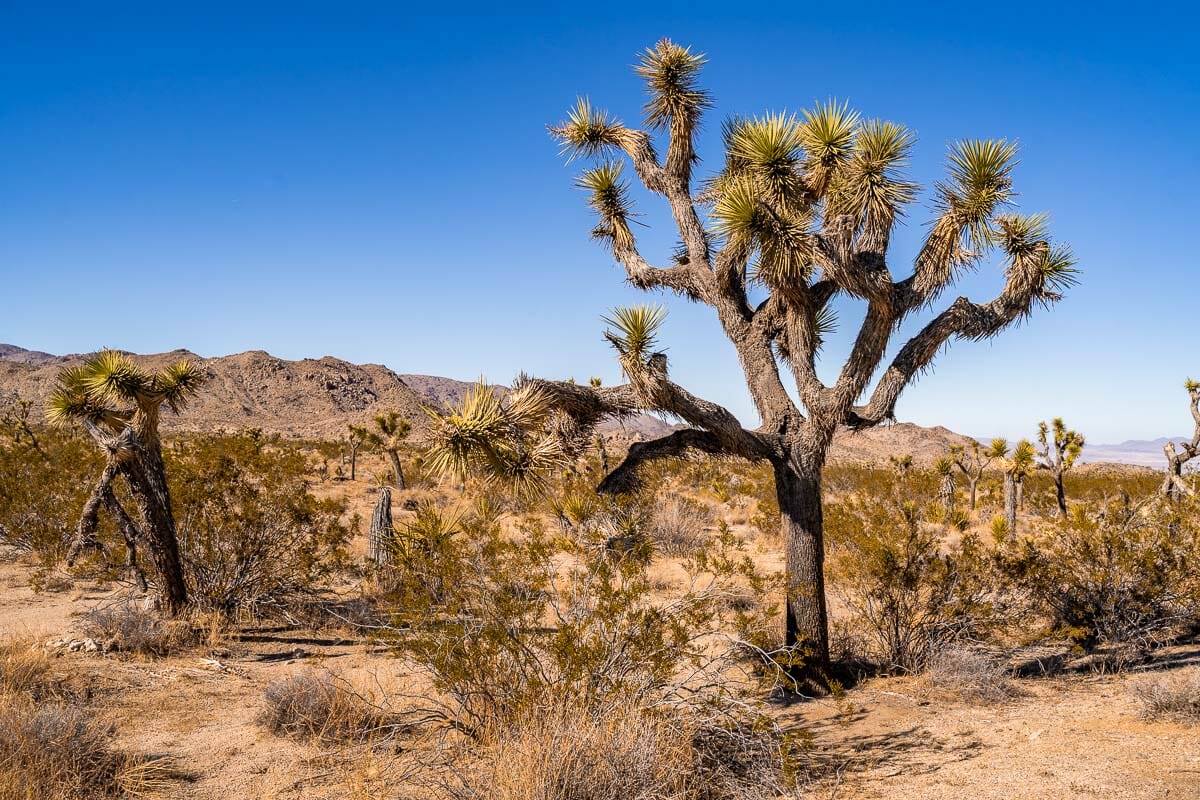
How to get to Joshua Tree National Park
As the park itself is not served by public transport, the best way to get to Joshua Tree National Park is with your own rental vehicle.
Los Angeles is the nearest major city for getting to Joshua Tree National Park. It’s located 130 miles (209 km) west and the drive takes around 2.5 hours one way. The fastest route is via I-10 with a turn-off at Whitewater onto Route 62 (the Twentynine Palms Highway).
Alternatively, you can visit as a day trip from Las Vegas, Nevada. It takes 3-3.5 hours to drive the 218 miles (350.8 km) from Sin City along I-15 via the Mojave National Preserve.
Los Angeles International Airport (LAX) and the Harry Reid International Airport (LAS) are well-connected to US cities as well as international destinations.
Located an hour’s drive away, Palm Springs International Airport (PSP) is in fact the closest airport.
Along with Palm Springs, small cities and towns that provide a jumping-off spot for your Joshua Tree one day trip include Joshua Tree Town, Yucca Valley, Coachella, and Twentynine Palms. These towns have a limited supply of rental vehicles.
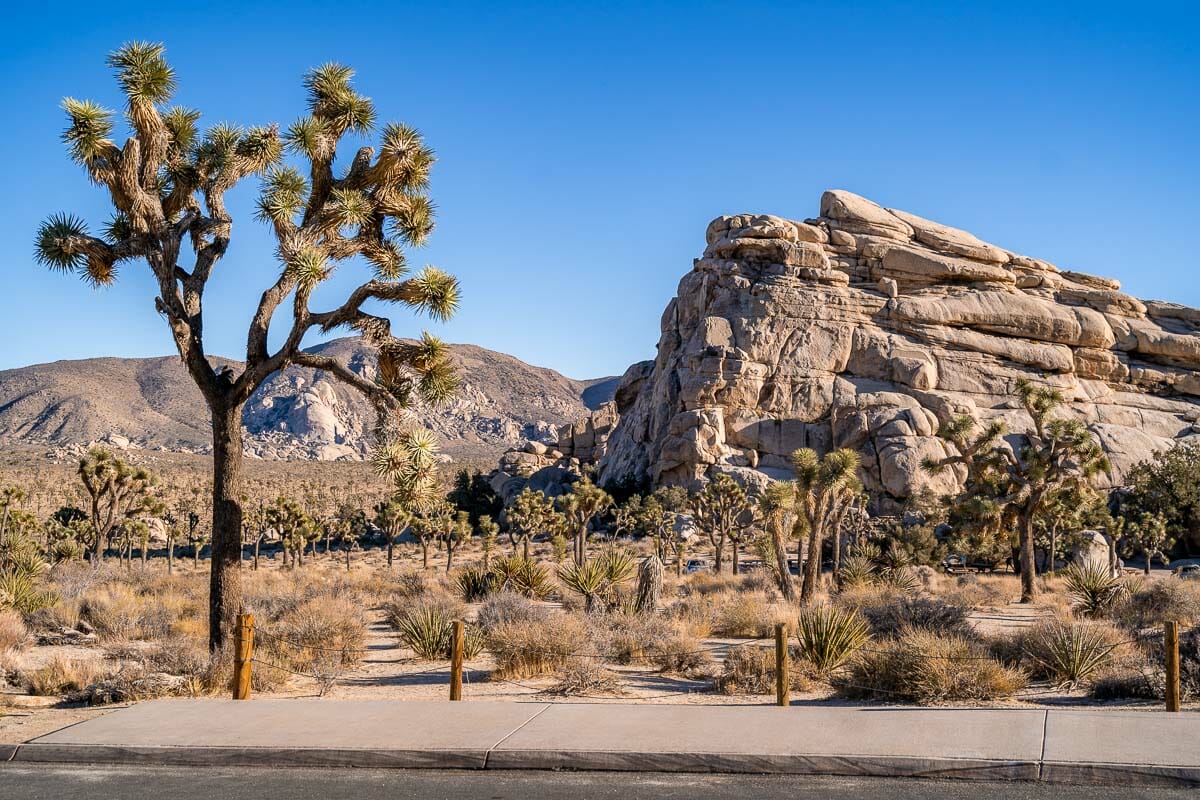
Entrance fee & Opening times
Admission to the Joshua Tree National Park is $30 per vehicle. If you’re traveling via motorcycle the fee is $25 while visitors on bicycle or foot only pay $15. All passes are valid for 7 consecutive days from the date of purchase.
You can purchase your entry pass online in advance via the national park website or pick it up in person at one of the visitor centers or stations. In case you have the America the Beautiful Pass, you don’t need to pay an entrance fee.
Note that the North Entrance Station (near the city of Twentynine Palms) and the West Entrance Station (near the town of Joshua Tree) each accept only debit or credit cards.
The Joshua Tree Visitor Center, Oasis Visitor Center, and Cottonwood Visitor Center each accept cash as well as debit or credit cards.
As the park is open every day of the year, you can plan a Joshua Tree day trip any day of the year. You can hike and explore the park within the hours of sunrise and sunset.
The main Joshua Tree Visitor Center is generally open daily, 7.30 am-5.30 pm. On public holidays, the center closes at 5 pm. Other visitor centers operate under different hours so if you think you’ll want to visit the others, you should check the opening hours.
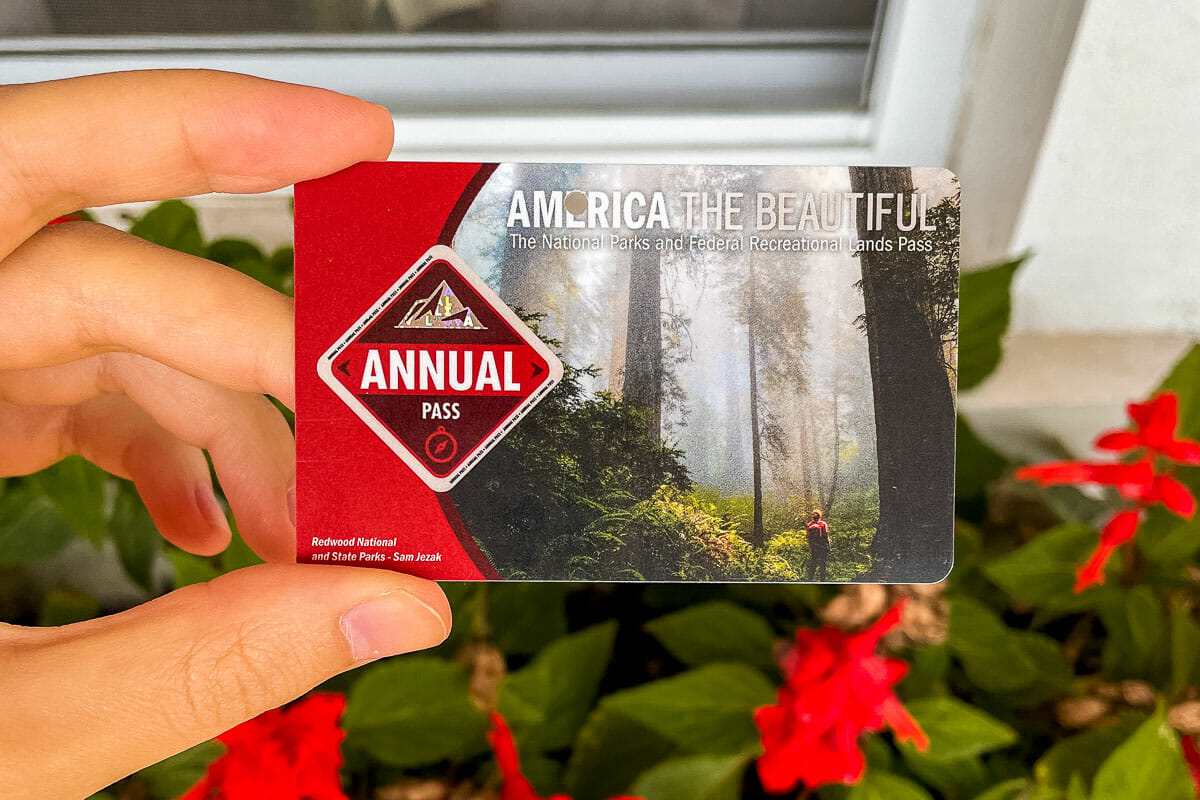
Best time to visit Joshua Tree
The best time to plan your one day in Joshua Tree is during the fall or spring months when the temperatures are most bearable for venturing out of your vehicle.
Spring is definitely the best time to visit Joshua Tree. March, April, and early May bring wildflowers to the park, with mild daytime temperatures and chilly evenings. On the downside, you will have to compete with larger crowds. Autumn is equally pleasant with October bringing comparable temperatures but footfall in the park is much lower.
The winter months of December, January, and February are cold but you’ll likely have much of the park to yourself. On the rare occasion that snow falls in the desert, you will be in for a special treat!
Summer is not ideal as temperatures can surpass 38˚C (100˚F) and put you at risk of sunstroke and dehydration. But if you’re happy to spend longer in your car and avoid the hiking trails then it is possible to still have a great time and see the highlights of Joshua Tree in a day.
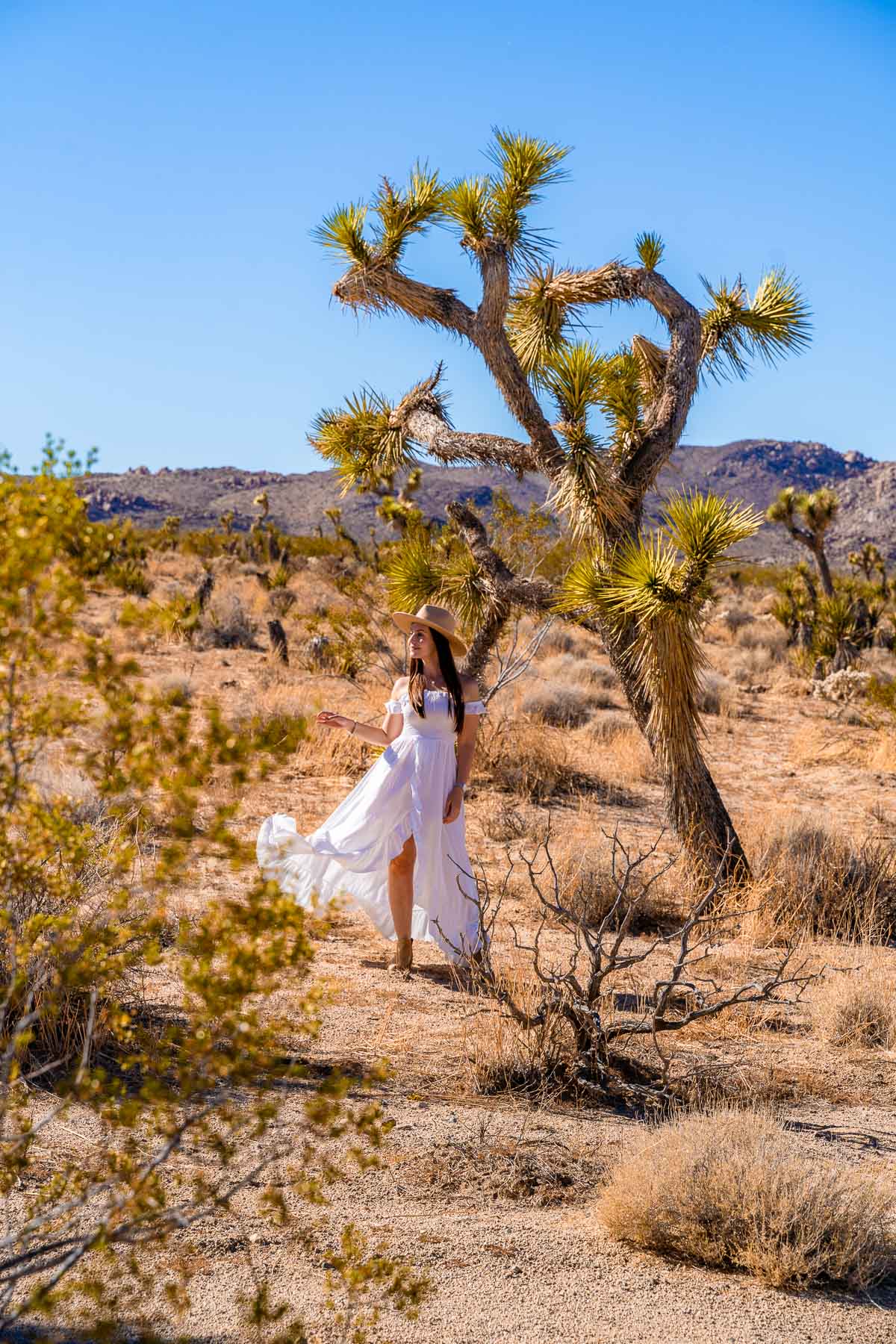
How to get around in Joshua Tree
As there is no public transport available within the park, you will need to have your own wheels. If you rent a car, you can explore the park at your own leisure. Alternatively, you can explore by motorcycle or bicycle (but not in the summer months!). You could even try your luck at hitchhiking.
If you would prefer to plan your Joshua Tree day trip as part of a tour, then there are a limited number of options at present.
This Joshua Tree National Park: Driving Tour is the best option. The price includes return travel from Palm Desert, California, park admission fees, drinking water, and a guided service to a selection of the major highlights. Throughout the day you will have the option to undertake gentle hikes.
If you are visiting independently then it’s highly beneficial to purchase the Joshua Tree National Park Self-Driving Audio Tour. You can play this as you drive and absorb tonnes of facts about the landscape while you cruise.
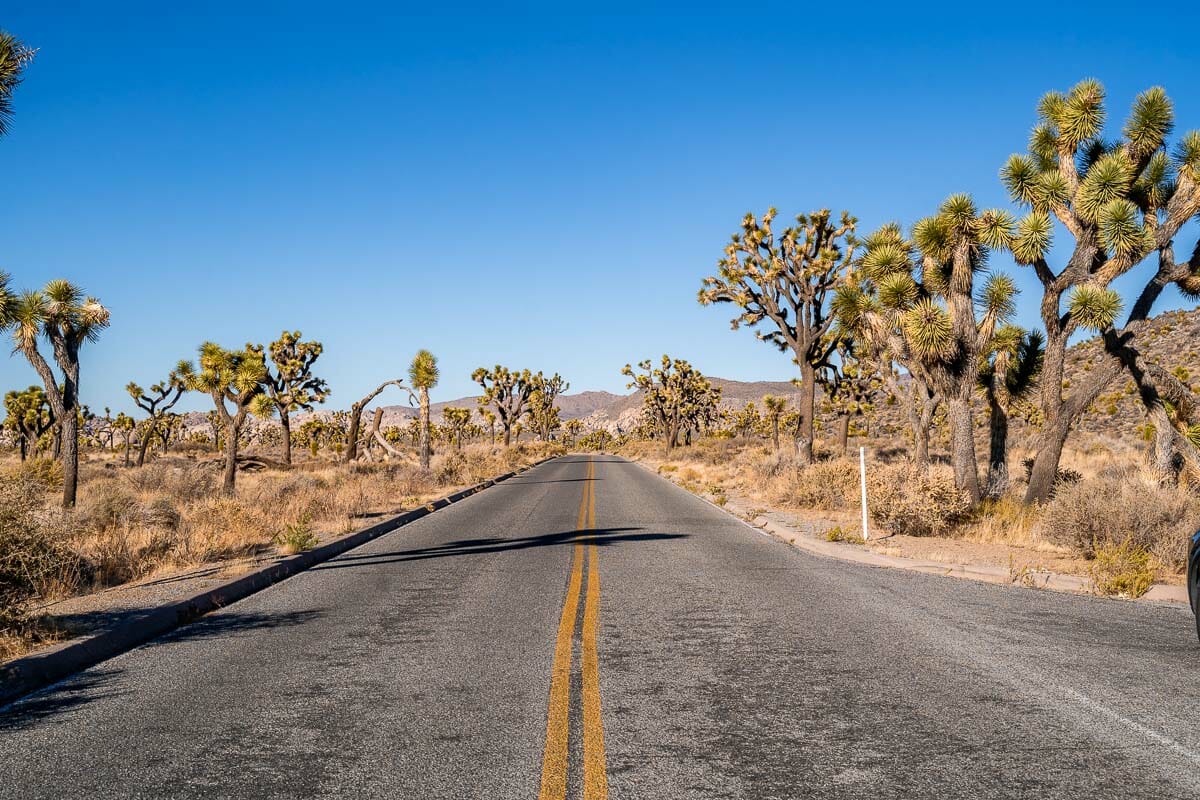
Where to stay in Joshua Tree
You have a variety of options for where to stay in Joshua Tree depending on the level of comfort required and how close you want to be in relation to the park.
Camping inside Joshua Tree National Park
The only option within the park limits is to camp at one of the many campgrounds inside the perimeter.
In terms of camping, Black Rock, Cottonwood, Indian Cove, Jumbo Rocks, and Ryan each cost $20-25 per night. Facilities vary at each campsite – some feature water and flush toilets, others are equipped with pit toilets.
It is highly advisable that you reserve your space in advance. Advance bookings are mandatory if your Joshua Tree one day itinerary falls during the peak season of November to May.
Hidden Valley, White Tank, and Belle Campgrounds each operate on a first-come, first-served basis. The rate is $15 per night and the sites are equipped with pit toilets and fire grates with tables but no potable water facilities.
You can research the various campgrounds further using the National Parks Service website.
Staying in a town/city close to Joshua Tree National Park
If camping is not your cup of tea, you can stay in one of the nearby towns with the closest options being Joshua Tree Town, Twentynine Palms, or Yucca Valley. Coachella and Palm Springs are a fraction further afield but these small cities have more accommodations on offer.
The good news is that you can find lots of traditional accommodations near the park. Boutique cabins, vintage caravans, and simple motels are all on offer.
Tips for visiting Joshua Tree in a day
These are some handy tips that will make sure your day trip to Joshua Tree runs as smoothly as possible.
- Parking spots get snapped up early in the national park. Plan to arrive as early as possible so that you can visit the more popular landmarks.
- In the same vein, you will need to arrive especially early during the summer months. It is essential to start walking trails no later than 9 am while the weather peaks. Ensure that you are clear of the hiking trails before it gets dark.
- Wear proper footwear such as hiking boots or regular sneakers. It’s very dusty and there are sharp stones that aren’t compatible with sandals or flip-flops!
- Potable water is rare in the national park and you’re going to need to drink a lot of it! Take double the amount that you think you will need as well as some electrolytes to avoid dehydration.
- Pack a nutritious lunch and lots of snacks to keep your energy levels buoyant during the day. You’ll sweat a lot so salty snacks and protein-rich nuts and cereal bars are recommended as well as fruit.
- Due to the desert climate, conditions in the national park are fickle. Prepare that you might encounter scorching heat and downpours over the course of your Joshua Tree day trip. Take precaution against the sun with high-factor sunscreen, a sun hat, and polarized sunglasses but pack a waterproof jacket and layers for the evening.
- Joshua Tree is particularly prone to strong winds. Ensure that your possessions and clothing are secure and that you hang onto any trash to avoid it blowing into the wilderness.
- Carry a First Aid Kit, flashlight, and whistle in case of emergency.
- Download the National Parks Service app prior to your visit. It’s free and packed with essential details such as maps, tours, and information about the scenery that will enhance your exploration. Armed with the app and this one day Joshua Tree itinerary, you will be able to ensure your trip goes without a hitch!
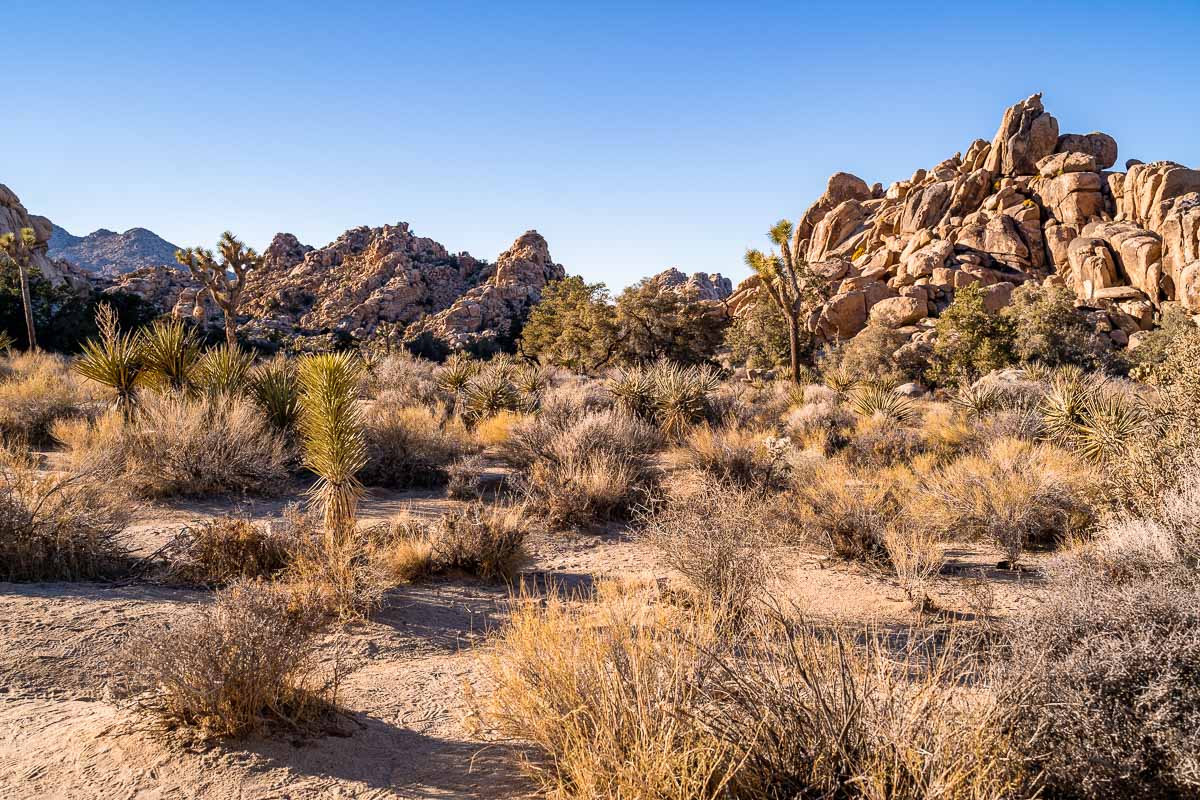
Planning a trip to California?
Then you might want to take a look at all our other travel guides about California. I promise, they are just as awesome as this article was!
- 15 Best San Francisco Instagram Spots You Can’t Miss
- Where to Stay in Los Angeles: 7 Best Areas & Hotels
- 2 Days in Los Angeles: Best Things to Do in LA in 2 Days
- 16 Most Instagrammable Places in LA for Epic Photos
- How to Spend One Day in Death Valley National Park
- Joshua Tree Day Trip: The Perfect One Day Joshua Tree Itinerary
Other USA Destinations: New York | Vermont | New Hampshire | Nevada | Illinois | Massachusetts | Maine
Pin It for Later!
